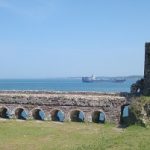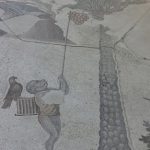Very little information exists about the Turkish Roma community that is especially conspicuous in Thracian towns such as Kirklareli. Officially it’s said to be 500,000 strong although some sources put the number as low as 35,000 while others put it as high as 5 million.
Most of the Roma are Muslims and some, especially older members of the community, speak their own Romani language. In the 2000s several organisations started pressing for greater rights for the Roma, especially after the debacles the redevelopment of Sulukule and then Tarlabaşı.
Remember the scenes in the James Bond movie From Russia With Love which were set in a gypsy encampment against the İstanbul city walls? Well, that was Sulukule and when it comes to the Roma recently it has been the gentrification of Sulukule that has been scooping all the publicity.
Sulukule was said to be the longest established Roma community in Europe with around 3,000 residents. Until 1992 it had been a part of town well known for private “entertainment houses” where many a young Turk got his kicks watching the locals wiggle their belly buttons to fiery rhythms. By the mid-2000s, however, the area was in a sorry state. Residents were offered housing in Taşoluk, a new town well beyond the walls, while their old houses were replaced with homes for the wealthy. Many came straight back again, unable to afford the rents and the fares to work. Some resettled in Tarlabaşı only to find parts of that in turn being torn down for redevelopment.
Slum clearance? Ethnic cleansing? Modernisation? Opinions are as divided on this topic as on anything else to do with the Roma.
Thrace has a large settled population of Roma who are thought to have arrived at around the time of the conquest of İstanbul in the mid-15th century. In general, Turks tend to have a low opinion of the Roma, callously dismissing them as “çingene (gypsies)” but you’ll soon realise that things are a bit different in this neck of the woods when you see rather politer signs reading “Roma Pastanesi (Roma Cake Shop)” and “Roma Düğün Salonu (Roma Wedding Room”) dotted about Kirklareli. The Roma themselves, with their dark complexions and fragile frames, are equally conspicuous going about the same sort of business as everybody else in defiance of their basket-weaving reputation.
Hıdırellez and Kakava
Two festivals in early May are especially strongly associated with the Roma: Hidırellez, which also takes place in İstanbul, and Kakava which takes place in the Edirne-Kırklareli-Babaeski area of Thrace. Both are celebrated over 5-6 May, a date which also has associations with St George. Both festivals have more to do with pre-Islamic pagan ritual than with anything to do with the Koran.
Hıdırellez celebrates the meeting on Earth of a holy man named Al-Khıdr with the Prophet İlyas (Elijan). Kakava has to do with the second coming of a saviour known as Baba Fingo. Roma people go to the river Tunca to wash their face, hands and feet and light candles for him. The day has been co-opted by the state in Edirne where formal celebrations involving jumping over bonfires (as per Nevruz) are performed in the grounds of Sarayiçi.

